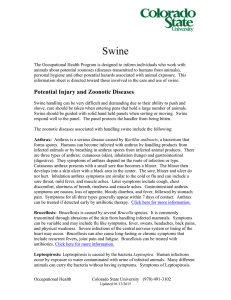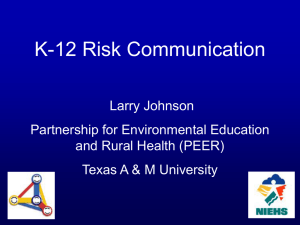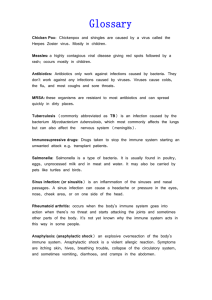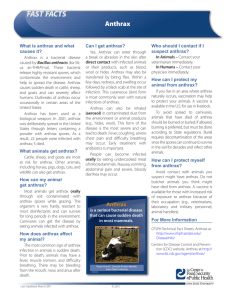Bacteria and Virus Webquest - ... 1. What is anthrax? Anthrax is an acute infectious disease.
advertisement
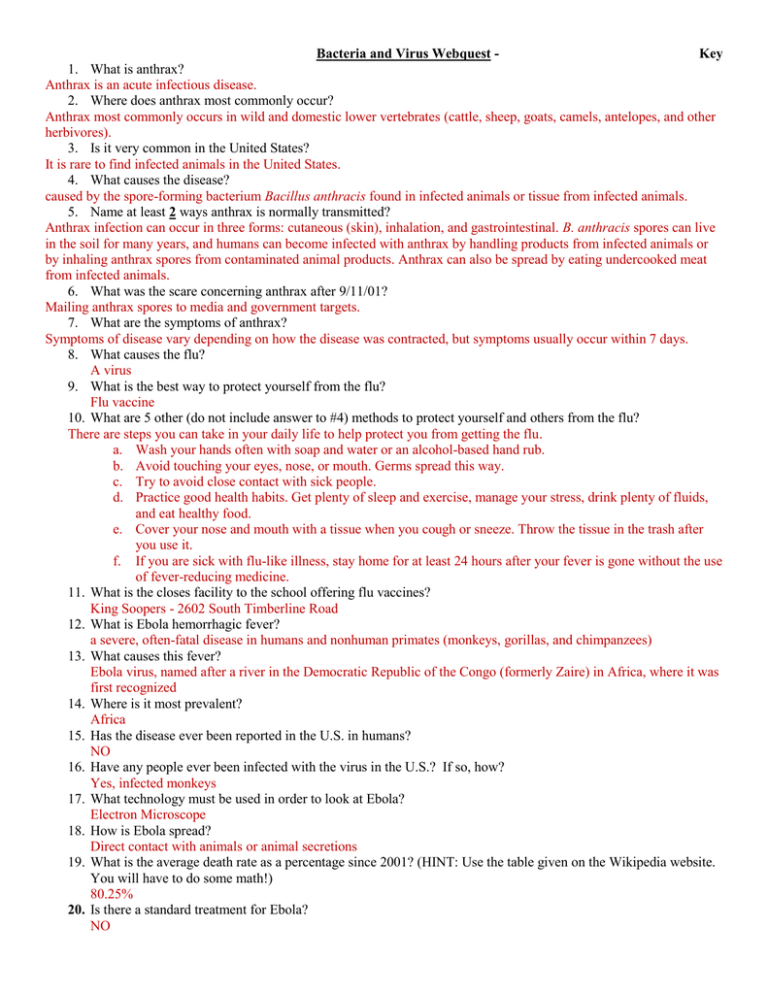
Bacteria and Virus Webquest Key 1. What is anthrax? Anthrax is an acute infectious disease. 2. Where does anthrax most commonly occur? Anthrax most commonly occurs in wild and domestic lower vertebrates (cattle, sheep, goats, camels, antelopes, and other herbivores). 3. Is it very common in the United States? It is rare to find infected animals in the United States. 4. What causes the disease? caused by the spore-forming bacterium Bacillus anthracis found in infected animals or tissue from infected animals. 5. Name at least 2 ways anthrax is normally transmitted? Anthrax infection can occur in three forms: cutaneous (skin), inhalation, and gastrointestinal. B. anthracis spores can live in the soil for many years, and humans can become infected with anthrax by handling products from infected animals or by inhaling anthrax spores from contaminated animal products. Anthrax can also be spread by eating undercooked meat from infected animals. 6. What was the scare concerning anthrax after 9/11/01? Mailing anthrax spores to media and government targets. 7. What are the symptoms of anthrax? Symptoms of disease vary depending on how the disease was contracted, but symptoms usually occur within 7 days. 8. What causes the flu? A virus 9. What is the best way to protect yourself from the flu? Flu vaccine 10. What are 5 other (do not include answer to #4) methods to protect yourself and others from the flu? There are steps you can take in your daily life to help protect you from getting the flu. a. Wash your hands often with soap and water or an alcohol-based hand rub. b. Avoid touching your eyes, nose, or mouth. Germs spread this way. c. Try to avoid close contact with sick people. d. Practice good health habits. Get plenty of sleep and exercise, manage your stress, drink plenty of fluids, and eat healthy food. e. Cover your nose and mouth with a tissue when you cough or sneeze. Throw the tissue in the trash after you use it. f. If you are sick with flu-like illness, stay home for at least 24 hours after your fever is gone without the use of fever-reducing medicine. 11. What is the closes facility to the school offering flu vaccines? King Soopers - 2602 South Timberline Road 12. What is Ebola hemorrhagic fever? a severe, often-fatal disease in humans and nonhuman primates (monkeys, gorillas, and chimpanzees) 13. What causes this fever? Ebola virus, named after a river in the Democratic Republic of the Congo (formerly Zaire) in Africa, where it was first recognized 14. Where is it most prevalent? Africa 15. Has the disease ever been reported in the U.S. in humans? NO 16. Have any people ever been infected with the virus in the U.S.? If so, how? Yes, infected monkeys 17. What technology must be used in order to look at Ebola? Electron Microscope 18. How is Ebola spread? Direct contact with animals or animal secretions 19. What is the average death rate as a percentage since 2001? (HINT: Use the table given on the Wikipedia website. You will have to do some math!) 80.25% 20. Is there a standard treatment for Ebola? NO






